My pick for cool house of the day….
 ČERNÍN (CZ) - Nine years of joint discussions, reflection and designing have gone into HŠH architekti’s Villa Hermína – a supremely individual solution tailored to a specific client.
ČERNÍN (CZ) - Nine years of joint discussions, reflection and designing have gone into HŠH architekti’s Villa Hermína – a supremely individual solution tailored to a specific client.
Villa Hermína has had a long genesis. It began back in 1999 with an exhibition project by HŠH architekti at Prague’s Jaroslav Fragner Gallery. The Space House exhibition addressed the theme of space as an essential constant in the process of designing and understanding architecture. The architects behind the exhibition – Petr Burian, Petr Hájek, Jan Šépka and Tomáš Hradečný – presented six houses, each demonstrating a different spatial concept, in order to emphasize the importance of space inarchitecture. It is their belief that space is often neglected in contemporary design in favour of other architectural elements such as light or materials.
And it was precisely this approach to design that captivated the future Villa Hermína client, Michal Čillík. It should be noted that at turn of the century there were still not very many good quality family houses being built in the Czech Republic. Mostresidential construction at that time consisted of substandard catalogue housing, which appealed to many inexperienced customers because of the relative ease of buying a home and the quick construction time. But it resulted in large tracts of suburban residential development without any input from architects or urban planners.
Villa Hermína is a small family house at the very end of the little village of Černín. Though not immediately obvious, the central theme of the building is the internal spatial arrangement. The entire interior is one open, continuous space. This unconventional layout originated with the client who, as an ardent film lover, wanted a special room for screening films. This eventually became the starting point for thearchitects, who were inspired to design a ‘home cinema’ by the natural incline of the land. It was from this that the entire concept for the building gradually developed. The slope on which the house stands determined the incline of the two internal ramps, which are the defining feature of the living space. The steep 21 per cent gradient also added an experimental dimension to the design.
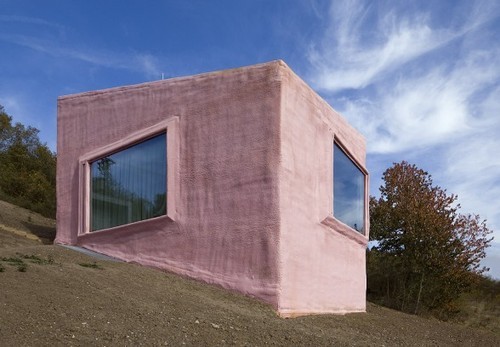
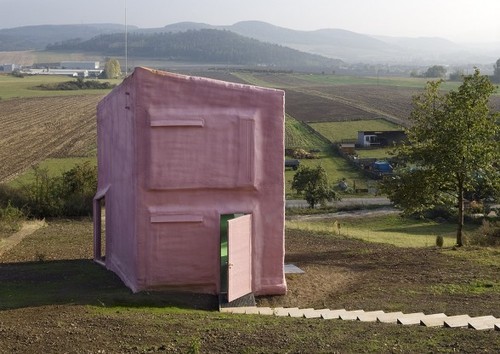
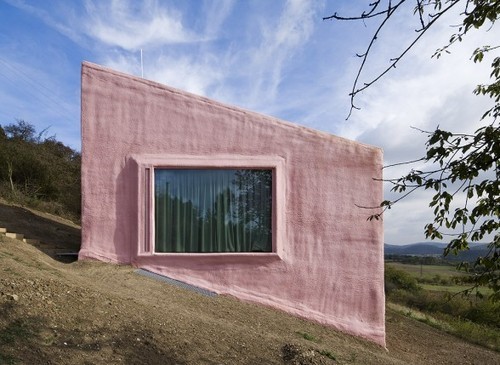
The lower of the two ramps is fitted out as a screening room with small, suspended armchairs, whereas the upper ramp offers a never-ending cinematic panorama of the nearby Brdy Hills through a large picture window. This solution does not allow for the placement of standard furniture but this merely serves to amplify the intense spatial experience, the awareness of every movement as well as the mutual proximity of family members.
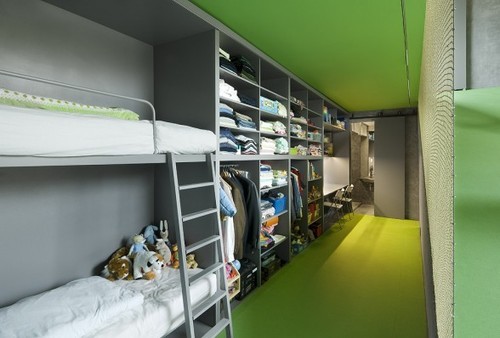
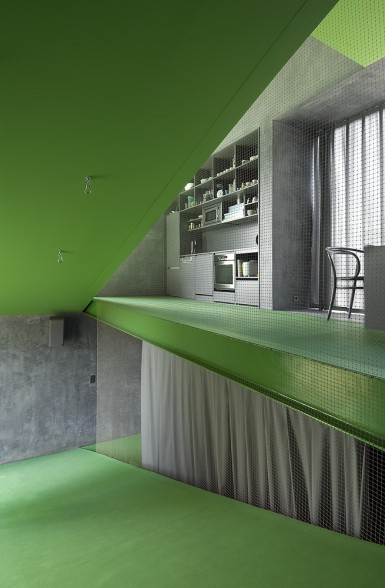
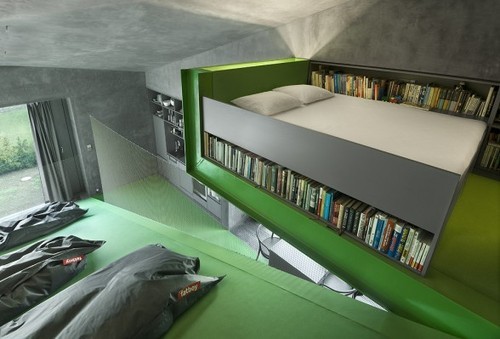
The remaining area between the inclined segments on the entrance floor is occupied by a kitchen-dining area; the children’s room and a study are on the lowest level, where there is also a spacious technical room underneath the ramp. The master bedroom, which is in fact no more than a bed, is on the highest level, where it cantilevers over the upper ramp like a ski jump. The bathrooms are situated on each floor in the straight parts along the front wall of the house.
The limited internal colour scheme is dominated by a distinctive green shade applied to the floors and parts of the ceilings, which references and continues the green vegetation in the adjacent garden. Because of the significant inclination of the ramps it was not possible to use standard floor coverings; the chosen anti-slip flooring is normally used in sports facilities. The rest of the area is in muted grey tones – a neutral backdrop for residents and visitors alike.
The internal spatial composition also affects the external form of the house. Each wall is perforated by only one opening, and the sloping roof follows the same inclination as the ramps. However, the non-traditional look of exterior owes as much to the sprayed polyurethane coating, which is both thermal insulation and rainscreen, and which has deliberately not been smoothed over. The rather unusual shade of pink is intended as a reference to the architects’ favourite building, the cavitation tunnel (1968–1975) of the Versuchsanstalt für Wasserbau und Schiffbau (Research Institute for Hydraulic Engineering and Shipbuilding) in Berlin by the architect Ludwig Leo.
Villa Hermína’s owner did not view the construction of a family home merely as a means to creating a home, but rather as the creation of an original work of art. And he managed to find just the right architects for this task.

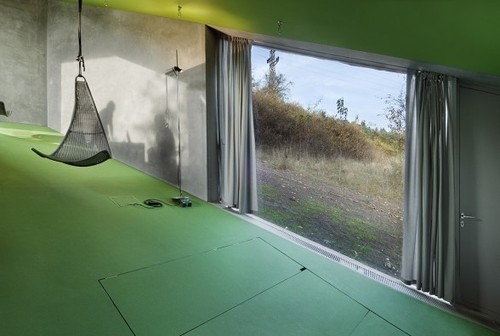
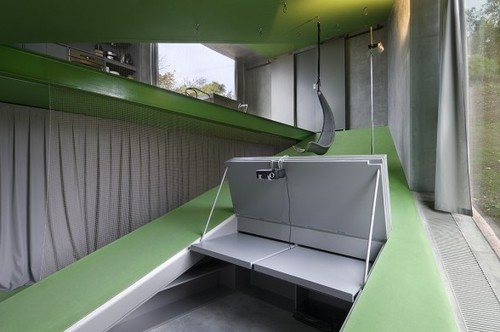
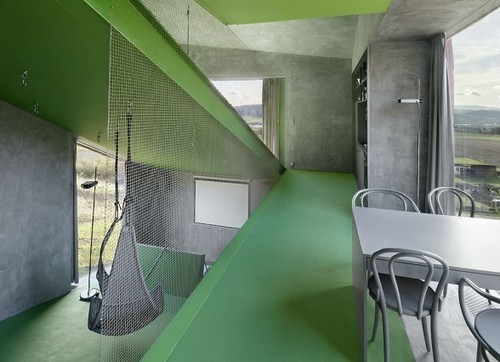
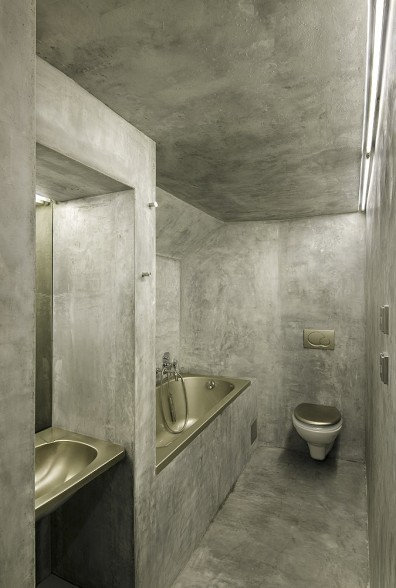
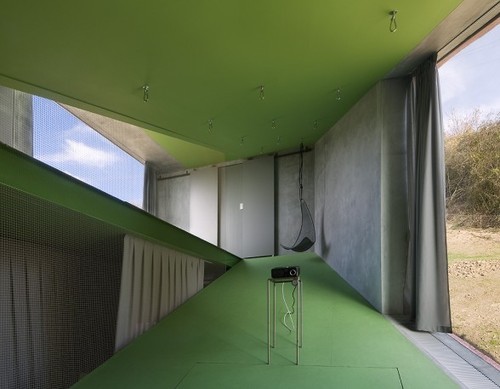
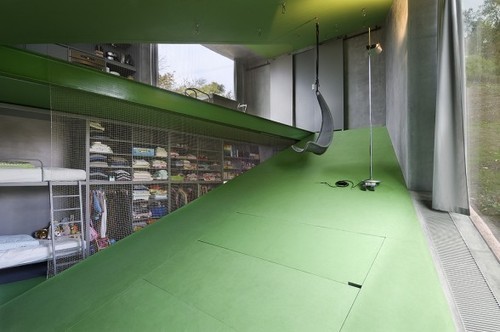
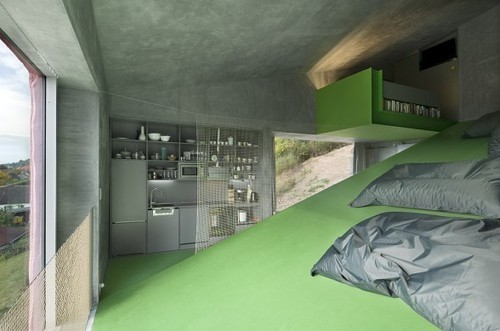
via ~ a10.eu magazine
No comments:
Post a Comment
Note: Only a member of this blog may post a comment.